Hi and welcome to Susanality, a newsletter by me, Susan Spungen, that celebrates seasonal cooking. If you enjoy today’s recipe, please help spread the word by forwarding this email to friends and family who may enjoy it too. And if you want additional weekly recipes, technique + styling tips, and video tutorials to land in your inbox, consider investing in a paid subscription (for less than the cost of a latte per month!). Either way—thank you so much for being here!
Not only is this favorite dessert made almost entirely from eggs, it also looks like an egg, making it perfect for either Easter or Passover (as long as you’re OK with a dairy dessert at your Seder). I first came up with this idea in 2016, when I was dreaming up something fun that would work for either holiday. When I posted the rather simple shot on my instagram, it got a huge response, bigger than any I had gotten before, and I knew I was onto something. With the slightly runny curd flowing out of the meringues and pooling on the surface they really look like eggs! If you’ve been following me for a while, you may have seen them before, but I’ve never really shared the recipe officially. If I have, even I can’t remember where or when. Now we’ll all know just where it is!
While a lot of people refer to these as a “pavlova,” they’re not technically, even though they have much in common with that classic dessert named for a prima ballerina. A pavlova usually has some cornstarch folded into the meringue to give it a soft, chewy center. While I adore a good pavlova and that texture, I use Swiss meringue (which is when you dissolve the sugar into the egg whites while stirring over simmering water) to create crisp meringues that really hold their shape. Swiss meringue is a very stable mixture, so once you’ve cooked it, it can sit in the bowl for a bit and you can take your time shaping and reshaping your little swirls and swoops. It usually bakes up smooth and shiny, retaining all the detail.
I like to finish these with some crushed pistachios for a bit of color and flavor, but you could leave that off, or use some crushed freeze-dried berries for a different color and pop of tart flavor. A dollop of something creamy, either unsweetened whipped cream or even the slightly tart whipped crème fraîche is a nice foil for the quite sweet meringues and curd. Sweeten the cream if you want, but I appreciate the contrast here, and I think you will too. Adding some raspberries would also be a nice touch. If you’re making these for Passover, skip the powdered sugar, which is not kosher for Passover because of the small amount of cornstarch in it. And remember, regular vanilla extract is also not kosher for Passover, so skip that too. You can use the scrapings of a vanilla bean if you have one.
If you’re looking for something more savory for tonight’s or tomorrow night’s Seder—and you have a subscription to NYT Cooking—may I direct you to these delicious recipes I developed last year for them? The story ran in print, but of course all of the recipes are archived on the app. These Sweet Potatoes with Tsimmes Glaze were a standout for me from that story, if you’re looking for a quick vegetable addition to your menu. They are really easy to prepare.
If you’re not a subscriber to NYT Cooking but really want the recipe(s), let me know! I will share it with the first 10 people who request it as a gift. Just reply to this email so I have your email address.
Here’s to wishing all of you a sweet, safe, and happy holiday, whatever you’re celebrating!
Lemon Curd Meringues
This is a fairly big meringue recipe, so it is great for the holidays. It also uses all the egg whites from the curd recipe. The meringues will keep for several days in an airtight container, as will the curd (in the fridge of course).
When ready to serve, dollop the lemon curd into the center of each meringue, sprinkle with chopped pistachios, and dollop unsweetened whipped cream next to them, if desired.
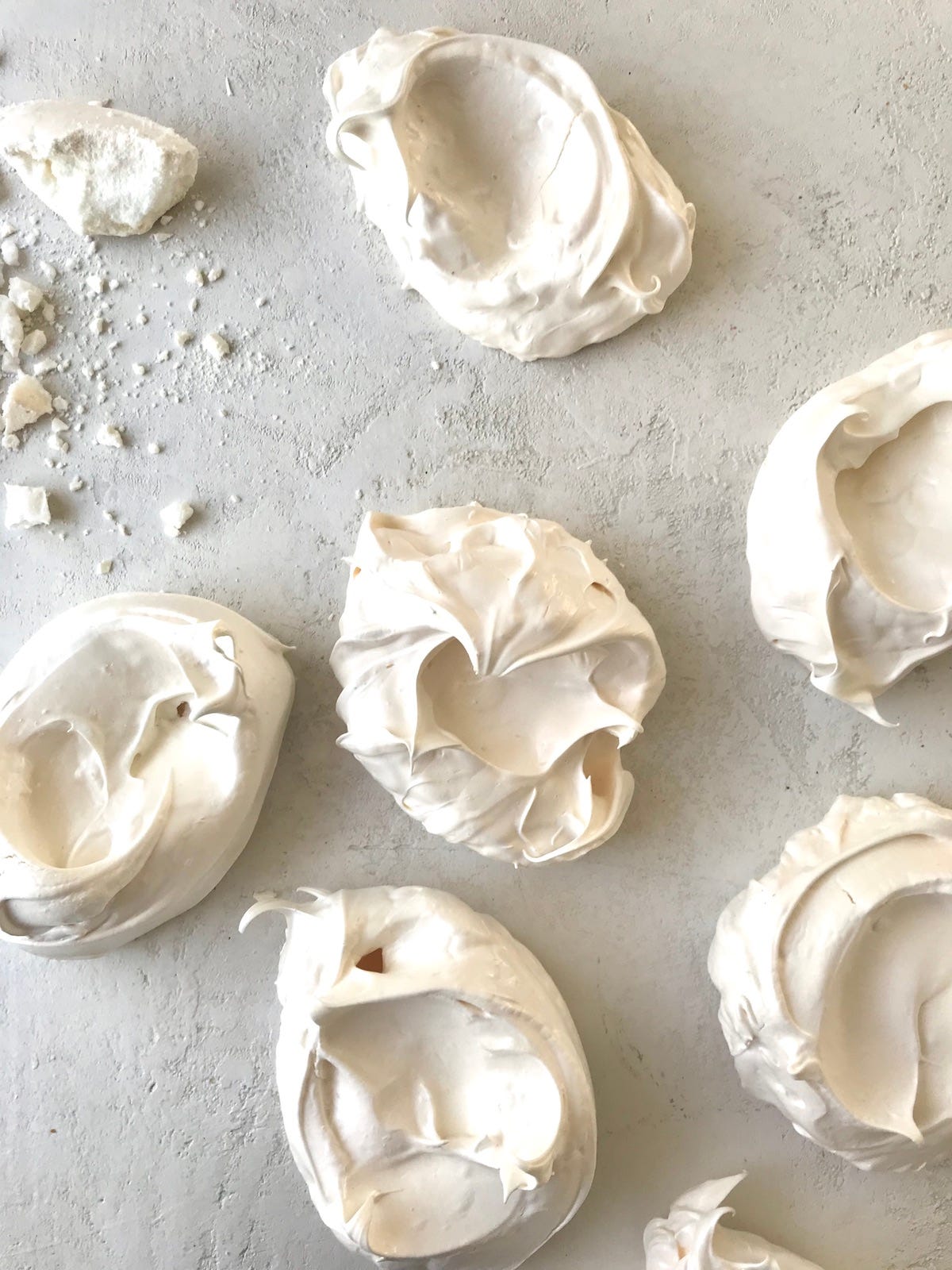
Crisp Meringues
Makes 12
6 large egg whites/180g
1 ½ cups/300g granulated sugar
Pinch of cream of tartar
Pinch of coarse salt
1 ½ teaspoons vanilla extract (or scrapings from 1/2 a vanilla bean)
Heat the oven to 200°F. Combine the egg whites, sugar, cream of tartar, and salt in the heatproof bowl of an electric mixer and set over a pan of simmering water. Whisk constantly until the sugar is completely dissolved and the mixture is hot to the touch, about 3 minutes.
Transfer to a stand mixer fitted with the whisk attachment and beat until stiff, glossy peaks form, 5 to 7 minutes. Mix in the vanilla. (You could also use a hand mixer to whip the meringue.)
Line 2 baking sheets with parchment paper or baking mats. Dollop the meringue into 12 equal piles and make a little depression with the back of a soup spoon in each one.
Bake meringues for 2 hours. Turn off the oven and leave meringues in until cool. (It’s best to make these the day before or the morning of the day you want to serve them.)
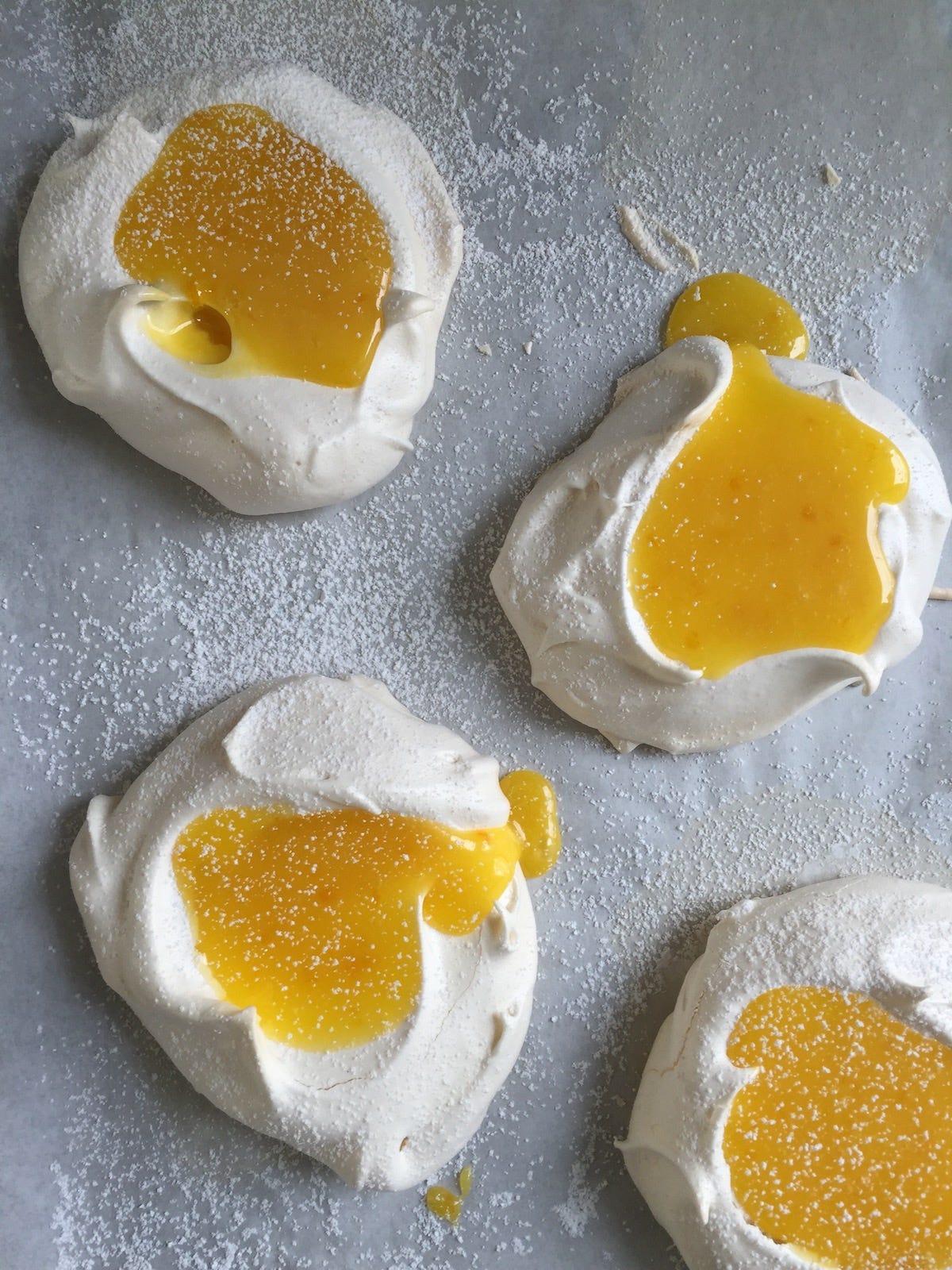
Lemon Curd
Lemon curd goes back and forth between a liquid and solid state depending on its temperature. Remember that it has quite a bit of butter in it and behaves accordingly. If using it to smoothly glaze the top of a cake or pour into a pre-baked tart shell, it should be used warm. It will spread out all on its own to a smooth-as-glass surface. On the other hand, chill it and it will be firm enough to slice.
Makes about 2 cups
1/2 cup lemon juice
6 egg yolks
1 cup/200g sugar
4 teaspoons freshly grated lemon zest
1 stick (8 tablespoons) cold unsalted dairy or vegan/plant butter, cut into pieces
Combine the lemon juice, egg yolks, and sugar in a non-reactive bowl (stainless steel is the best option). Whisk until smooth.
Transfer the mixture to a heavy non-reactive saucepan and cook over medium heat, stirring constantly with a wooden spoon, until hot, 5 to 10 minutes. The mixture should begin to thicken as the temperature increases. Once thick (it should coat the back of the spoon), reduce the heat and cook for an additional 5 to 10 minutes, stirring continuously.
Remove the saucepan from the heat and strain over a bowl. Stir in the lemon zest and butter until the butter has completely melted. Cool or chill until the curd reaches the desired consistency, before dolloping into the center of each meringue.
Leftover curd can be stored in the refrigerator in an airtight container up to 1 week. Warm over a double boiler or microwave briefly to return it to liquid form. It will set up again when chilled.
What Else to Cook this Holiday Weekend
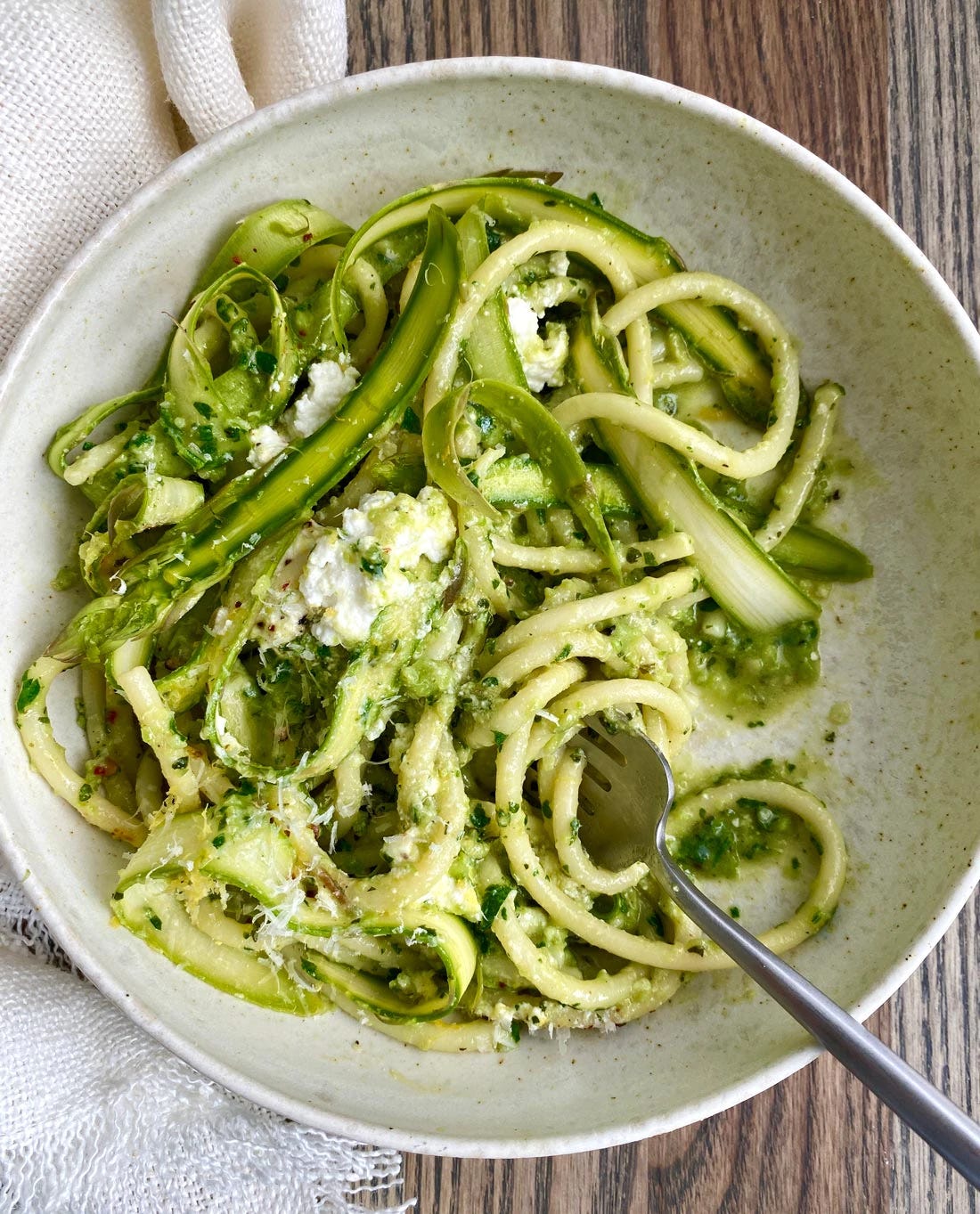
These Strawberry Scones would make a nice addition to an Easter brunch.
As would Strawberry Tarts!
For a savory option… try my Bucatini with Pea Pesto and Saved Asparagus, pictured above.
The Greenest Vinaigrette (accessible to paid subscribers only) would be perfect over roasted potatoes or on absolutely any type of salad.
My Meryl’s Chicken Salad is another delicious brunch or lunch option.
And of course: Don’t forget about the Coconut Macaroons from earlier this month!
If you make one of these recipes (or any other), I hope you will post and tag me in them on IG. I love to see what you’re cooking!

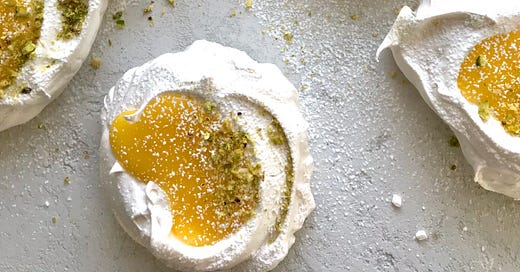



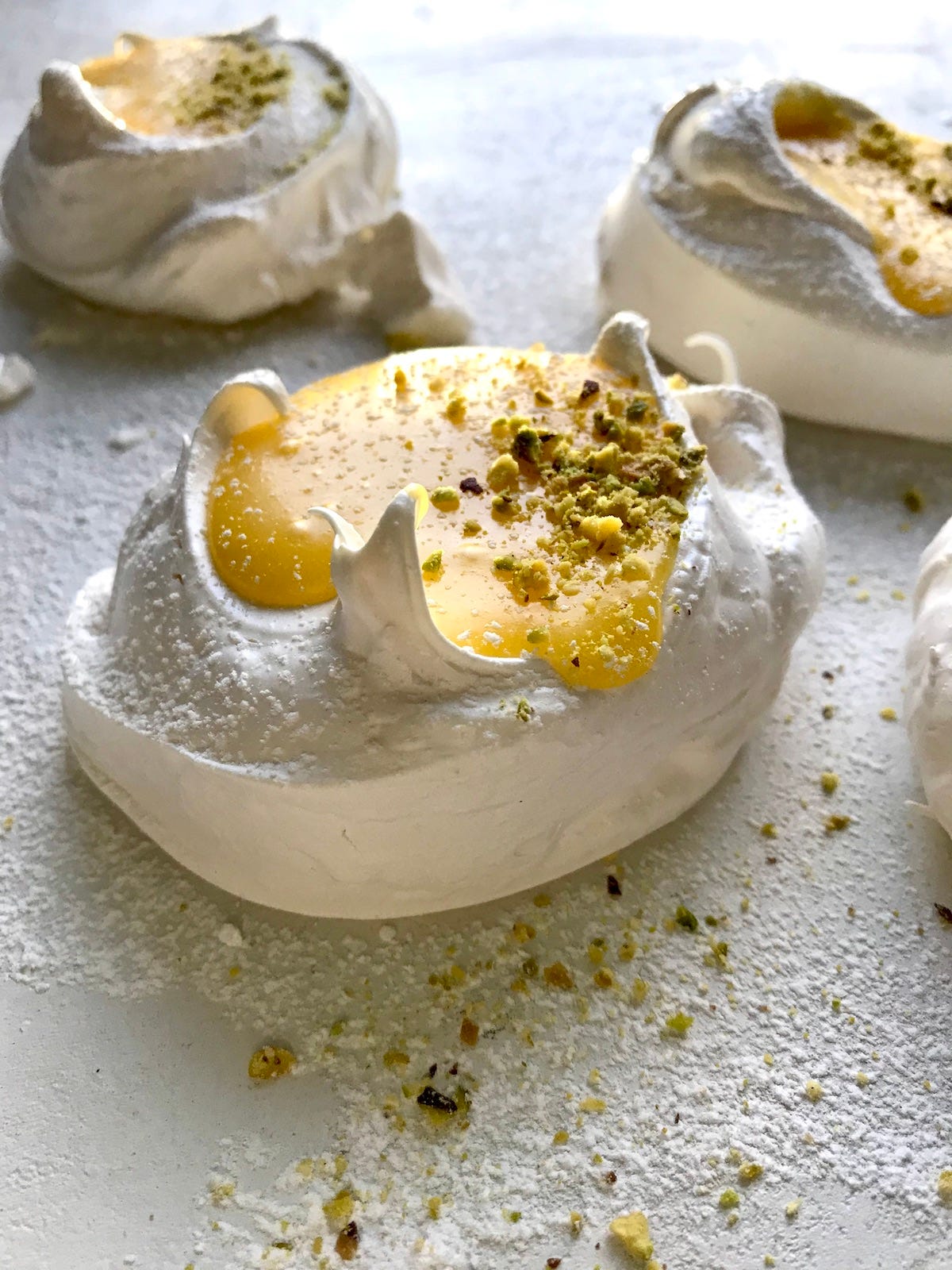

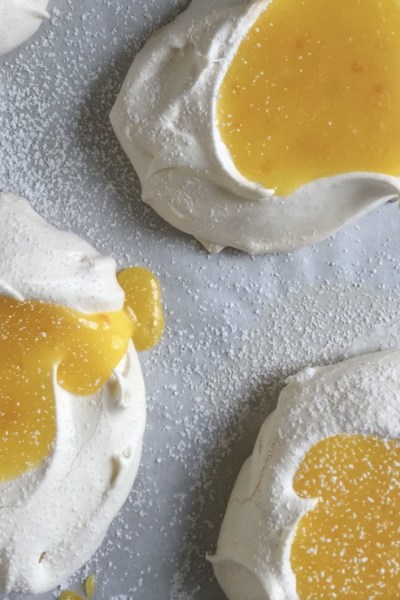
Love the recipe, will try it out :)
I needed 4 lemons for half a cup of juice so I zested them all and ended up adding all of it! YUMMMM! When you measure zest does you lightly or firmly pack?